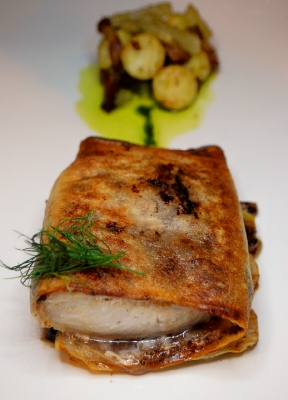
Amberjack
Amberjack has always been popular in Florida, but was not seen in New Orleans restaurants until the fish crisis of the middle 1980s. That's when redfish was taken off the table, speckled trout was severely limited, and chefs had to start looking for alternatives.
Some chefs liked amberjack; others didn't. I see that still going on. A restaurant either serves amberjack all the time, or hardly ever.
 I think the reason for this is the tremendous quality differential from one amberjack to another. While the smaller fish are beyond reproach, the bigger they get the less appealing they are. It's even reported that past a certain large size (and these babies can grow well over 100 pounds), amberjack is poisonous.
I think the reason for this is the tremendous quality differential from one amberjack to another. While the smaller fish are beyond reproach, the bigger they get the less appealing they are. It's even reported that past a certain large size (and these babies can grow well over 100 pounds), amberjack is poisonous.
So, whenever I'm offered amberjack, I ask questions. First, how is it cut? If it's in fillets, it's probably good, although I want to know how thick those fillets are. If the fish is in steak form, I won't order it.
Amberjack's closest relative in local waters is pompano--which will be found very far up this list. But if there's any similarity in taste or texture to that great fish, it's eluded me.
Nevertheless, amberjack is a nice off-white fish, with enough fat to give it an interesting flavor, but not so much as to make it taste strong or oily.
The most common preparation of amberjack is grilled. It stands up nicely to the heat, and takes a good Creole seasoning as well. If you have a fillet of eight to ten ounces, you could blacken it to good effect.
Back when amberjack just started appearing in restaurants, Chef Roland Huet put some into his cold-smoking pit at Christian's. The results were so fine that whenever amberjack comes my way, at least a bit of it winds up in a slow-smoking situation on my Big Green Egg. It's great that way, hot or cold. Even works as a smoked fish for breakfast.